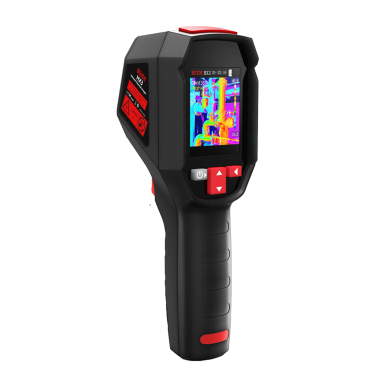Infrared Thermometer: A Comprehensive Guide to Non-Contact Temperature Measurement

# Infrared Thermometer: A Comprehensive Guide to Non-Contact Temperature Measurement
## Introduction to Infrared Thermometers
Infrared thermometers have revolutionized temperature measurement in various industries by providing a fast, accurate, and non-contact method of detecting surface temperatures. These devices measure the infrared energy emitted by objects and convert it into temperature readings, making them invaluable tools in numerous applications.
## How Infrared Thermometers Work
Infrared thermometers operate on the principle of detecting infrared radiation emitted by all objects above absolute zero. The device consists of:
Keyword: infrared thermometer
– An optical system that collects infrared energy
– A detector that converts the energy into an electrical signal
– Signal processing electronics
– A display unit
The thermometer calculates temperature based on the amount of infrared energy detected, using the object’s emissivity to ensure accurate readings.
## Key Features of Modern Infrared Thermometers
Today’s infrared thermometers offer several advanced features:
– Wide temperature measurement ranges (-50°C to 3000°C in some models)
– Fast response times (often less than 1 second)
– Adjustable emissivity settings
– Laser targeting for precise measurement
– Data logging capabilities
– Wireless connectivity options
## Applications Across Industries
Infrared thermometers find applications in numerous fields:
### Medical Use
– Fever screening (especially during pandemics)
– Body temperature measurement
– Monitoring wound healing processes
### Industrial Applications
– Monitoring electrical components
– Checking mechanical equipment
– Quality control in manufacturing
– HVAC system maintenance
### Food Industry
– Checking food storage temperatures
– Monitoring cooking processes
– Ensuring food safety compliance
### Scientific Research
– Environmental studies
– Material science research
– Thermal imaging applications
## Advantages Over Traditional Thermometers
Infrared thermometers offer several benefits compared to contact thermometers:
– Non-contact measurement reduces contamination risk
– Faster readings (instantaneous in most cases)
– Ability to measure moving or hazardous objects
– No need to wait for temperature stabilization
– Can measure extremely high temperatures safely
## Choosing the Right Infrared Thermometer
When selecting an infrared thermometer, consider these factors:
– Temperature range requirements
– Distance-to-spot ratio
– Required accuracy level
– Emissivity adjustment capability
– Response time needs
– Environmental conditions
– Additional features (data logging, alarms, etc.)
## Proper Usage Techniques
To ensure accurate measurements:
– Clean the lens regularly
– Account for the target’s emissivity
– Maintain proper distance according to D:S ratio
– Avoid measuring through glass or other transparent materials
– Consider environmental factors (humidity, steam, dust)
– Allow the device to acclimate to ambient temperature when moving between environments
## Maintenance and Calibration
Regular maintenance ensures long-term accuracy:
– Clean the lens with appropriate materials
– Store in protective cases when not in use
– Replace batteries promptly when low
– Perform periodic calibration checks
– Follow manufacturer’s maintenance guidelines
## Future Developments
The infrared thermometer market continues to evolve with:
– Improved accuracy and resolution
– Smaller, more portable designs
– Enhanced connectivity options
– Integration with smart devices
– Advanced data analysis capabilities
– AI-powered temperature interpretation
Infrared thermometers have become essential tools across multiple industries, offering quick, non-contact temperature measurement with impressive accuracy. By understanding their operation, features, and proper usage techniques, users can maximize the benefits of these versatile devices in their specific applications.